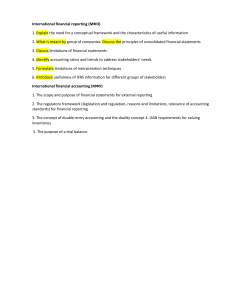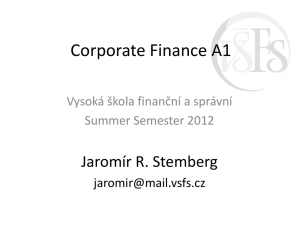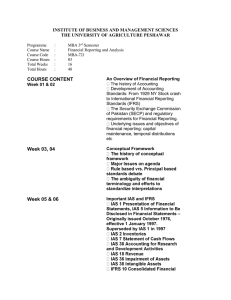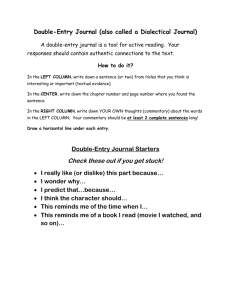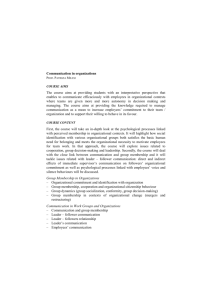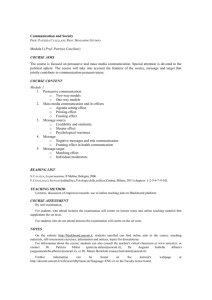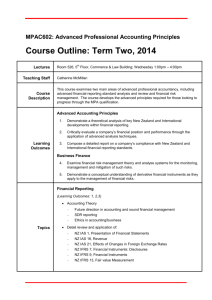Corporate Accounting and Financial Statements
advertisement
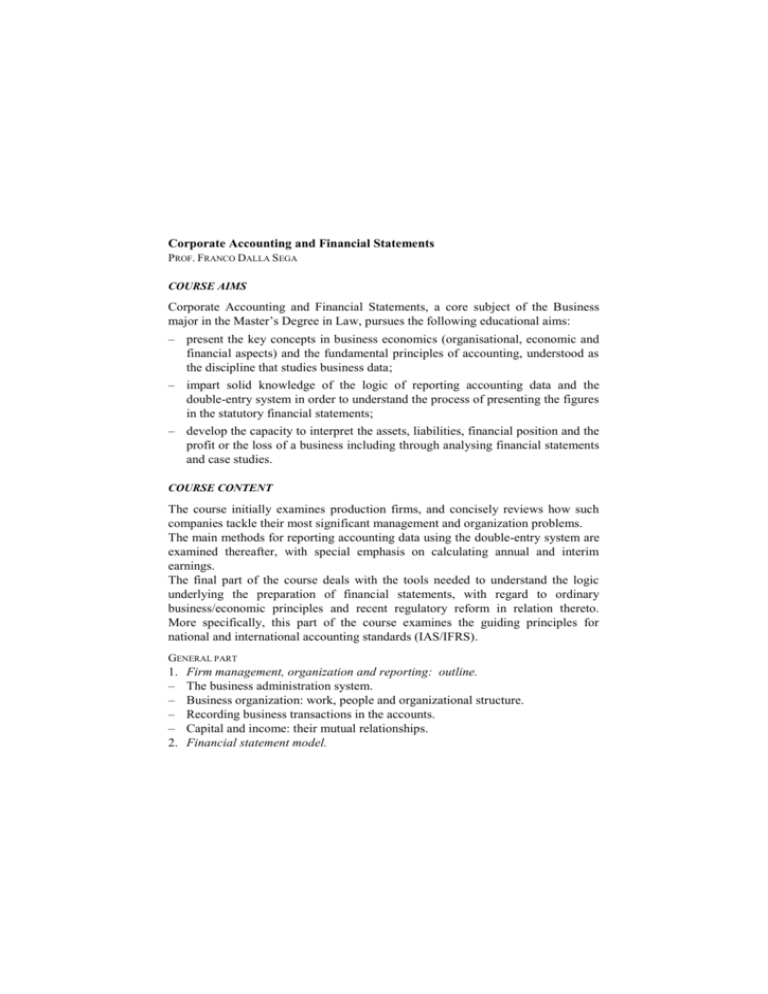
Corporate Accounting and Financial Statements PROF. FRANCO DALLA SEGA COURSE AIMS Corporate Accounting and Financial Statements, a core subject of the Business major in the Master’s Degree in Law, pursues the following educational aims: – present the key concepts in business economics (organisational, economic and financial aspects) and the fundamental principles of accounting, understood as the discipline that studies business data; – impart solid knowledge of the logic of reporting accounting data and the double-entry system in order to understand the process of presenting the figures in the statutory financial statements; – develop the capacity to interpret the assets, liabilities, financial position and the profit or the loss of a business including through analysing financial statements and case studies. COURSE CONTENT The course initially examines production firms, and concisely reviews how such companies tackle their most significant management and organization problems. The main methods for reporting accounting data using the double-entry system are examined thereafter, with special emphasis on calculating annual and interim earnings. The final part of the course deals with the tools needed to understand the logic underlying the preparation of financial statements, with regard to ordinary business/economic principles and recent regulatory reform in relation thereto. More specifically, this part of the course examines the guiding principles for national and international accounting standards (IAS/IFRS). GENERAL PART 1. – – – – 2. Firm management, organization and reporting: outline. The business administration system. Business organization: work, people and organizational structure. Recording business transactions in the accounts. Capital and income: their mutual relationships. Financial statement model. – Financial statements as a summary of operations. The business/economic significance of profits/losses and working capital; relationships with other profit/loss and capital figures (liquid capital and economic capital). – Business principles underlying the preparation of financial statements. 3. Financial statement components. – The balance sheet, profit and loss statement and their layout. – The notes to the financial statements. – The Directors’ Report on Operations. – Financial statements drawn up in accordance with IAS/IFRS international accounting standards. 4. Financial statement valuations. – Methods used to calculate quantitative results for the period. – The valuation of the main items on a company's balance sheet. – “Property, Plant and Equipment”, “Intangible Assets”, “Impairment of Assets” and “Financial Instruments” according to the IAS/IFRS international accounting standards. Performance of the following standard series of assignments is considered an integral part of the course. APPLICATIONS 1. – – – Operational rules for reporting Accounts as a reporting tool. The double-entry method (general information). The functioning of the accounts within the framework of the proposed system. 2. – – - Regular reporting of business transactions. Acquisition of productive factors. Sale of products/services. Adjustment of accounts. 3. The periodic computation of earnings and working capital. READING LIST The professor will announce the reading list at the start of the course and post it on the website: www.unicatt.it. Other items, documents and study materials will be recommended during the lectures throughout the course and posted on the professor's webpage. TEACHING METHOD The lectures are enriched with practical exercises on accounting records. These are introduced during the course to help students deepen their understanding of the technical aspects of corporate calculations. In addition to the lectures and self-study exercises, the course includes case studies and first-hand accounts by professionals. ASSESSMENT METHOD The examination consists of an oral. In order to sit the examination, students must pass a written paper aimed at testing their knowledge of the logic underlying financial statements and their understanding of the layout of balance sheets and profit and loss statements as laid down in the Italian Civil Code. NOTES Further information can be found on the lecturer's webpage at http://docenti.unicatt.it/web/searchByName.do?language=ENG or on the Faculty notice board.
